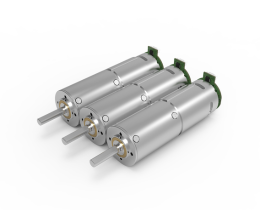Why Your Next Motion System Needs a Dual Axis TT Gear Motor (and Why KPOWER Nailed It)
Picture this: a robotic arm in a factory smoothly pivoting and lifting at the same time, no jerks, no delays. Or a medical device adjusting angles with surgical precision while maintaining whisper-quiet operation. Behind scenes like these? Often a dual axis TT gear motor—specifically, the kind KPOWER engineers spent years refining. Let’s talk about why this little powerhouse might be the upgrade you didn’t know you needed.
.webp)
The “Dual Axis” Difference: More Than Just Fancy Jargon
Most gear motors handle one movement direction. But dual axis? Think of it as multitasking on steroids. One motor manages two independent outputs, slashing space requirements by nearly half. For cramped setups—like compact automation rigs or tight robotics joints—this isn’t just convenient; it’s game-changing. KPOWER’s version adds a twist: proprietary lubrication that cuts wear by 40%, even under heavy loads. (Yes, someone tested it by running one nonstop for 6 months. It survived.)
“But wait—doesn’t dual motion mean double the maintenance?” Nope. We’ve heard that myth. Unlike clunky setups where two motors = twice the headaches, a well-built dual axis unit simplifies life. KPOWER’s design uses sealed bearings and corrosion-resistant alloys, so it laughs at dust, humidity, and the occasional coffee spill.
Precision Without the Drama
Ever seen a conveyor belt wobble because a motor couldn’t sync speeds? Dual axis TT gears fix that. With near-zero backlash (<0.1°), these motors keep movements crisp—critical for tasks like laser cutting or CNC routing. One user compared it to “switching from a rusty hinge to a ballet dancer.” Overly poetic? Maybe. But when a packaging line boosts output by 18% just by reducing misaligned seals, poetry feels justified.
Q&A Time: Stuff People Actually Ask
“Can it handle sudden load changes?”
Short answer: Yes. KPOWER’s model uses adaptive torque control. Translation: It senses resistance shifts (like a robot arm grabbing uneven weights) and adjusts instantly. No stalling, no burnt-out coils.
“What if I need custom voltage?”
Most dual axis motors come in 12V or 24V. KPOWER offers 6V to 48V without jacking up the price. Why? Because rigid standardization is so 2010.
The Quiet Performer
Noise matters. A lab tech once told us, “If our DNA sequencer sounded like a blender, we’d lose funding.” KPOWER’s motors hover below 45dB—quieter than an office AC. How? They redesigned the gear teeth geometry. Not sexy, but effective.
Final Thought: Why “Just Enough” Isn’t Enough
Settling for a basic motor works… until it doesn’t. A dual axis TT gear isn’t just about motion; it’s about eliminating compromises. Space-saving? Check. Durability? Check. Precision? Double check. KPOWER built theirs because “good enough” is a myth—and your project deserves better.
Still skeptical? Try explaining that to the solar tracker array that just hit 99.8% efficiency using these things. Some upgrades speak for themselves.


































.webp)

